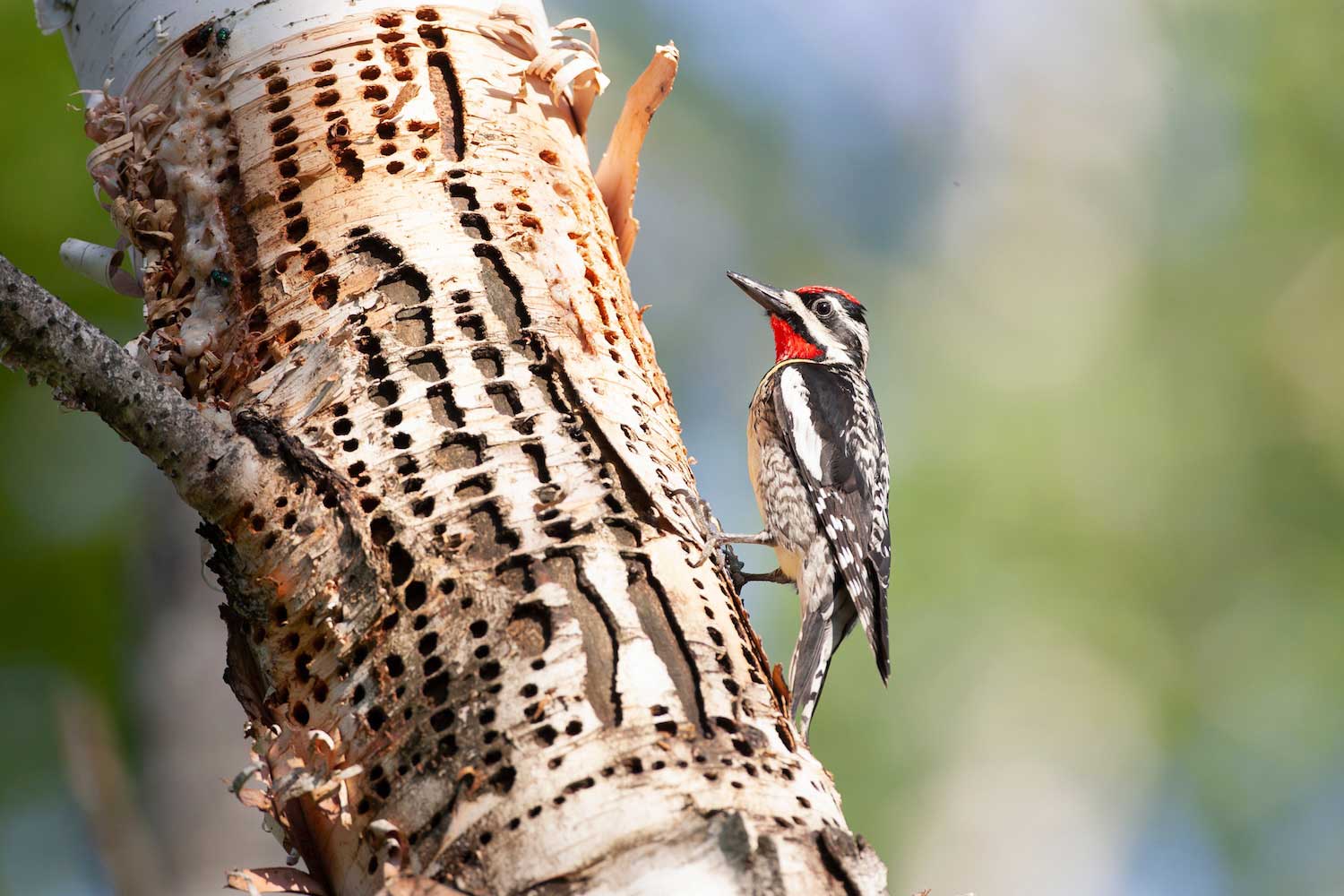Holey moley: Yellow-bellied sapsuckers leave distinct clues of their presence

Woodpeckers are one of those types of birds we can count on seeing all year long here in northern Illinois. Even in the dead of winter, we can catch glimpses of woodpeckers in our forests or maybe even paying a visit to our bird feeders for a quick meal. Not so for the yellow-bellied sapsucker, however.
Yellow-bellied sapsuckers are the only woodpeckers that live in the eastern United States and Canada that are fully migratory, according to the Cornell Lab of Ornithology. They have distinct breeding and overwintering territories, and northern Illinois is in the middle of them, meaning we most often see these birds during their migrations.
These woodpeckers are typically seen in northern Illinois between April and May and in September and October as they pass through on their way to and from their breeding grounds and their winter territory, according to Wildlife Illinois. While the southern half of Illinois is included in their winter territory, they are not typically seen in the northern part of the state in the winter months.
When they are seen here, don't expect bright flashes of yellow to catch your eye. The yellow on yellow-bellied sapsucker is subtle at best. These birds aren't bright like goldfinches or yellow warblers. They are mostly black and white with red foreheads, and the yellow in their name comes from a pale yellow patch on their bellies that can look more whitish than yellow, the Cornell Lab reports. You can tell the difference between the males and females by their throats. Males have red throat patches, and females have white throats.
Many of our local woodpeckers are insect eaters, yellow-bellied sapsuckers included. However, sapsuckers rely on sap for part of their diet too. To get at the sap, they drill wells into trees, according to Cornell Lab. These holes are easily recognized by their distinguishable pattern because sapsuckers will drill neat horizontal rows of sap wells.
They start the process in early spring, drilling into the inner trunk, called the xylem, to get at the sap that is moving up to the trees branches. Later in the season, they drill more shallow holes that are usually rectangular in size. They don't have to drill as deeply because the sap is in a more exterior part of the trunk called the phloem that moves the sap from the leaves.
Drilling sap wells occupies a lot of time for yellow-bellied sapsuckers. They have to work at the wells constantly to keep the flow of sap coming, according to the American Bird Conservancy. The sap attracts insects to the trees as well, and the sapsuckers eat them too. They also eat the inner bark from the tree as well as seeds and fruits. Sap itself only accounts for about 20% of their diet.
Sapsuckers are partial to trees with sweet sap, like maple and birch trees, but sap wells have been seen in more than 1,000 species of trees and woody plants, the American Bird Conservancy reports. They aren't frequent visitors to bird feeders, but will sometimes feed on suet and mealworms stocked in feeders.
All their work drilling holes into trees helps other birds as well. Ruby-throated hummingbirds and other hummingbird species as well as chickadees, nuthatches and ruby-crowned kinglets can sometimes be seen drinking the sap from these wells in the spring, before a lot of their usual food sources are producing nectar, according to the American Bird Conservancy. Bats, squirrels and many different types of insects like bees, moths and wasps can also use the sap as a food source.
Yellow-bellied sapsuckers are forest birds, but they are more particular about their habitat in the spring and summer. Because they rely on sap, in the spring and summer they prefer forests with fast-growing young trees, Cornell Lab reports. In the winter, they aren't as particular about their habitat and can be found in many types of deciduous forest.
Woodpeckers are known more for their drumming than their calls and sounds, and yellow-bellied sapsuckers have something of a unique drumming pattern. They drum more slowly than other woodpeckers, and the pattern is more irregular, according to the American Bird Conservancy. They also insert pauses into their drumming sequence, starting with a long series of drumming then a pause followed by a series of slower knocks.
In the areas where they breed, yellow-bellied sapsuckers often choose to nest in the same trees where they drill their wells. The male birds excavate a cavity to be used for a nest, and the same nest can be used for many years, Cornell Lab reports. Females incubate the clutch of four to six eggs for up to 13 days, and the hatchlings are cared for by their parents for a few weeks before fledging.
